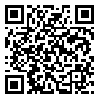BibTeX | RIS | EndNote | Medlars | ProCite | Reference Manager | RefWorks
Send citation to:
URL: http://rjms.iums.ac.ir/article-1-1533-en.html
Background: Probiotics are defined as “living organisms which upon ingestion in certain numbers, exert health benefits beyond inherent basic nutrition". One of the most significant groups of probiotic organisms are the lactic acid bacteria, commonly used in fermented dairy products. The actions of lactic acid bacteria are species and strain specific and depend on sufficient numbers of bacteria being available in the intestine. The difficulty in identifying and classifying strains has complicated researches, since benefits may only pertain to particular strains. The aim of the present study is to investigate the effect of a probiotic strain Lactobacillus plantarum isolated from Iranian traditional cheese on gastric ulcer healing.
Methods: In this experimental study 22 strains of lactic acid bacteria isolated from Iranian traditional cheese were investigated for Exopolysaccharide (EPS) production by phenol-sulfuric acid method which had been approved earlier for the ability of survival and growth in digestive system. To determine the effect of this probiotic strain, male wistar rats were divided into 3 groups experimental, control and negative control. Rats were deprived of food but not water for 24 hours and gastric ulcers were induced by luminal application of 0.12 ml acetic acid solution (60% v/v). One day after ulcer induction, the experimental groups received sterilized milk with Lactobacillus plantarum at concentration of 1×1010cfu/day, the control groups received sterilized milk and the negative control groups received normal saline through oral gavage for few consecutive days. Rats were sacrificed on days 5 and 14 after ulcer induction and the ulcer sizes (mm2) were summed. After histological study the effect of this probiotic on gastric ulcer healing was determined in each stomach. Data were analyzed with One way ANOVA test and all results were reported as Mean ± SEM.
Results: Lactobacillus plantarum significantly decreased gastric ulcer area compared to control and negative control groups and increased ulcer healing. Histological study on day 5 after ulcer induction showed significant reduction in number of neutrophils and significant increases in macrophages and fibroblasts (p<0.001). Also significant reduction in the number of neutrophils, macrophages and fibroblasts was observed on day 14 after ulcer induction (p<0.001).
Conclusion: Lactobacillus plantarum showed significant effects on gastric ulcer healing induced by acetic acid in rats.





